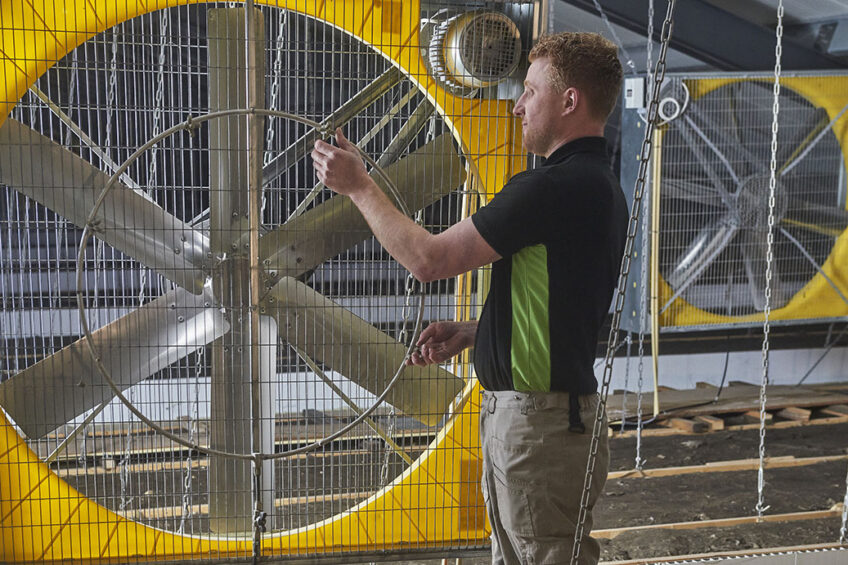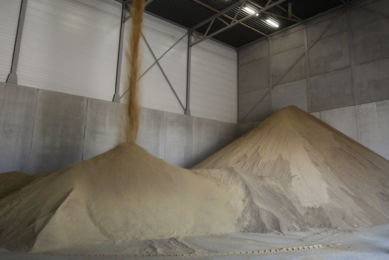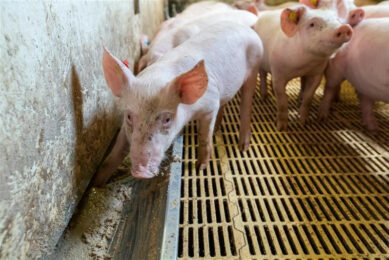8 Strategies to fight heat stress in pig houses

At the start of a 4-year long research initiative to design a practically and economically viable long term heat plan for the swine industry, Belgian researchers have drawn up 8 strategies that can help pig producers fight heat stress related problems.
The number of extremely warm summers is likely to increase and so is the amount of days classified as “hot”. Pigs are extra sensitive to heat as sweating is difficult for them and they have a limited lung and heart functioning. A large amount of pig production sites has not been adapted for extreme temperatures, leading to mortality and performance loss with pigs. Apart from economic effects, there is also an increasing amount of societal criticism on the health and welfare effects caused by heat stress.
A heat plan for pig production
That is why the Flanders Research Institute for Agriculture, Fisheries and Food (ILVO) will cooperate for 4 years with the Faculty of Veterinary Medicine at Ghent University to come to a heat plan, in a project called ”Coolpigs.” Alice Van Den Broeke, researcher at ILVO, said, “In summer 2021 there will be the first practical trials.” She is open to visiting farms which already have interesting measures put in place.

Mapping knowledge to the effects of heat stress
Apart from the research into measures that can be applied inside the pig houses as well as during transport, there is also the intention to map practical knowledge of visible as well as less visible effects of heat stress.
Leading up to the first results, in total 8 potential strategies have been identified that could prevent the occurrence of heat stress. Adaptations inside the pig house as well as the pigs’ environment are the most effective methods, according to the researchers, yet also the most difficult to implement on the short term.
8 Potential strategies to fight heat stress
![]() Adjustment of climate settings
Adjustment of climate settings
The monitoring of temperature, relative moist levels as well as air speed using sensors. Breathing frequency also provides a picture of heat stress in pigs.

No movements and treatments during heat stress
It is wise to vaccinate and move animals during the colder moments of the day. A lower pen density leads to fewer heat production and a lower need to ventilate.

Unlimited and cooled drinking water
The presence of unlimited amount of drinking water is essential, and when that water is cold, it is even more effective. That requires the insulation of the water supply pipes; attention is necessary for water quality, predominantly bacterial infections could occur.

Adjustments in feed composition
An option can be to provide a more concentrated diet which compensates for a lower feed intake yet does not lead to a lot of heat production.

Different feeding times
The feeding of larger portions could be considered, during the cooler moments of the day, and smaller portions when it is hotter. Additional attention should be wise to provide additional feed for suckling piglets to compensate for the sows’ lower milk let-down.

Adjustments in the pig house
Rising temperatures can be overcome by plastering the windows with white paint or window foil. The painting white of dark roofs could cool down the air underneath the roof by 3-4°.

Cooling of incoming air
- By ways of airconditioning: This relatively strong investment will decrease air temperature to the desired level.
- Heat pump with natural sources: Heat exchangers will release heat to the ground, ground water or even the water inside the air scrubbers, making sure that the incoming air will cool down.
- Spraying: In case the outside air has a low humidity, spraying can help to reduce the heat of incoming air by through evaporation.
![]() Direct animal cooling
Direct animal cooling
- Higher air circulation: In finisher pigs, a higher air speed can help to reduce heat levels, until an ambient environment of roughly 32-36°C.
- Drip cooling: Applying water on the pig skin can have a cooling effect, potentially in combination with higher air speeds. In outdoor pigs, a mud pool can take care of the cooling down.
- Floor cooling: For instance by shoulder cooling in a farrowing room.











